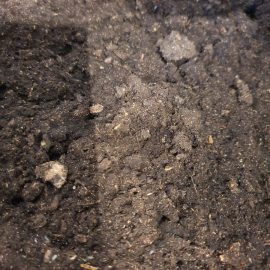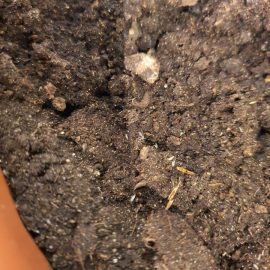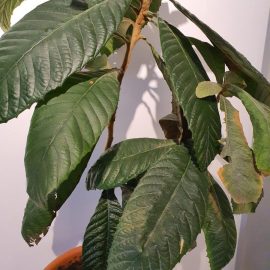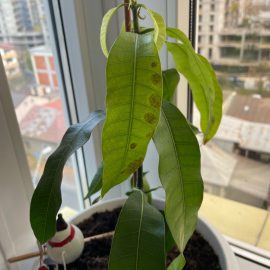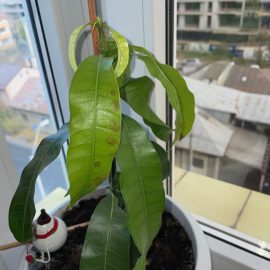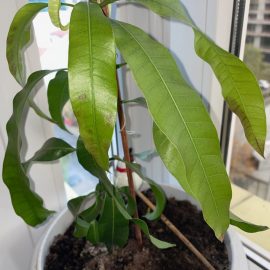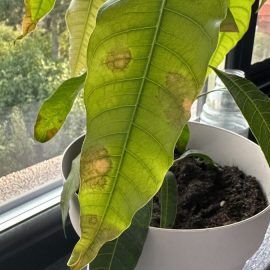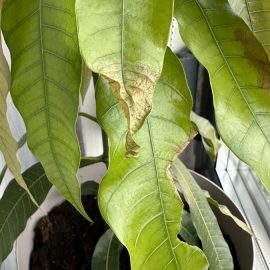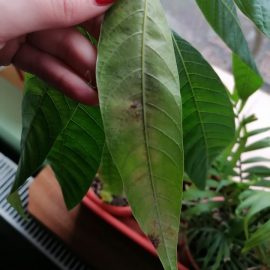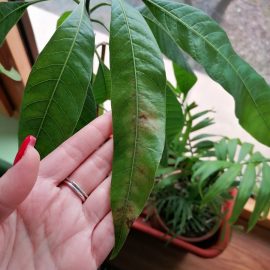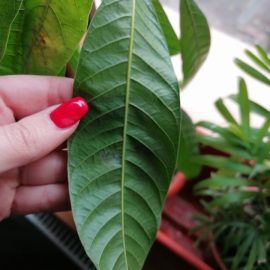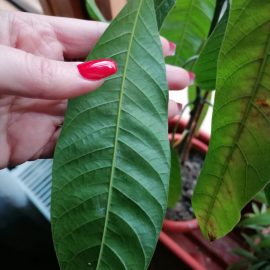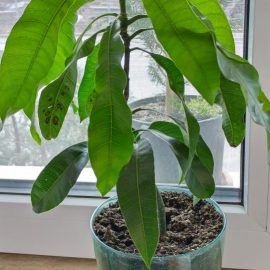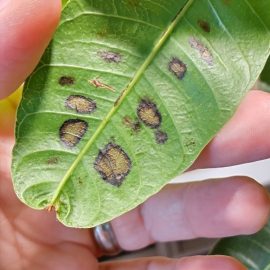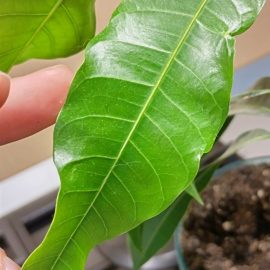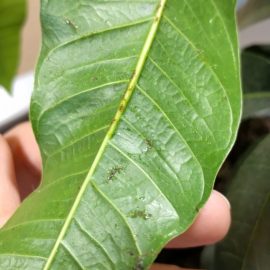Mango, plant care and growing guide
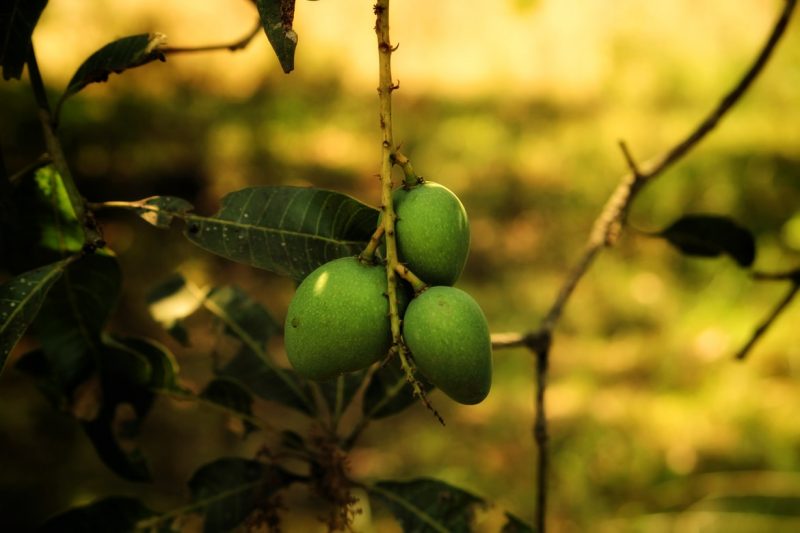
Mango (Mangifera indica) is a fruit tree native to Asia and belongs to the family Anacardiaceae. Its fruits are strongly aromatic and fragrant, rich in vitamin A, C, and D.
Mango is a tree with evergreen leaves and can reach heights of up to 20 meters in the areas where it is native. It can be grown indoors, but it has small dimensions.
The leaves are lanceolate, simple, with an alternate arrangement. They can reach lengths of 30 cm.
The flowers are small, white, or light pink and are arranged in panicles (inflorescence shaped in clusters).
The fruit can have different shapes, sizes, colors, and aromas, depending on the variety. It can reach a length of 25 cm and a weight between 150 g – 2 kg in its natural habitat.
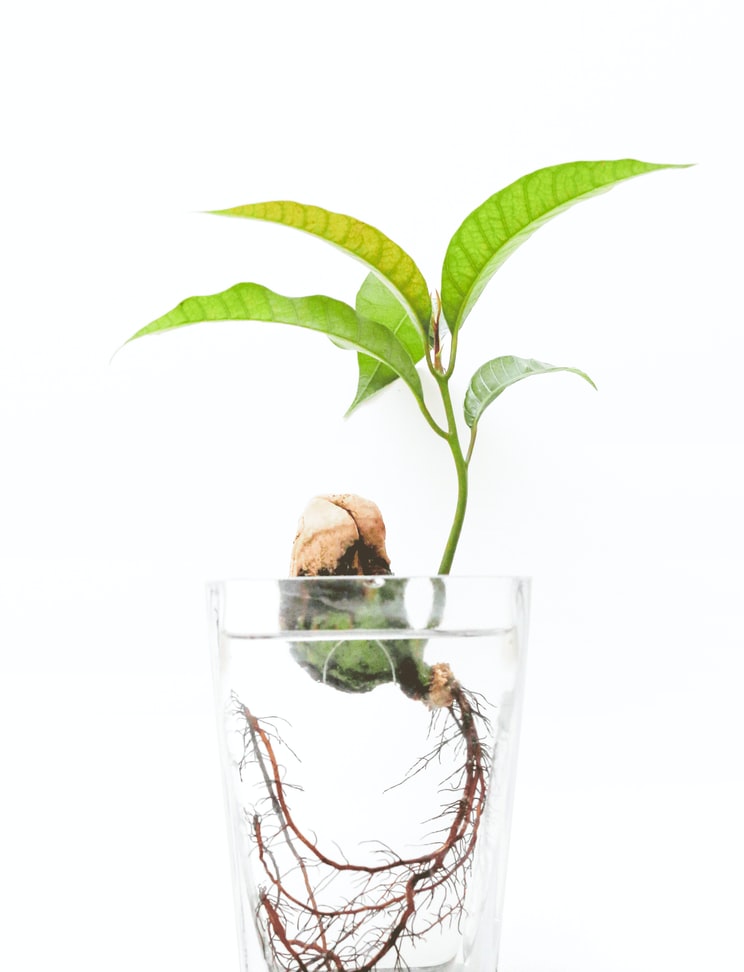
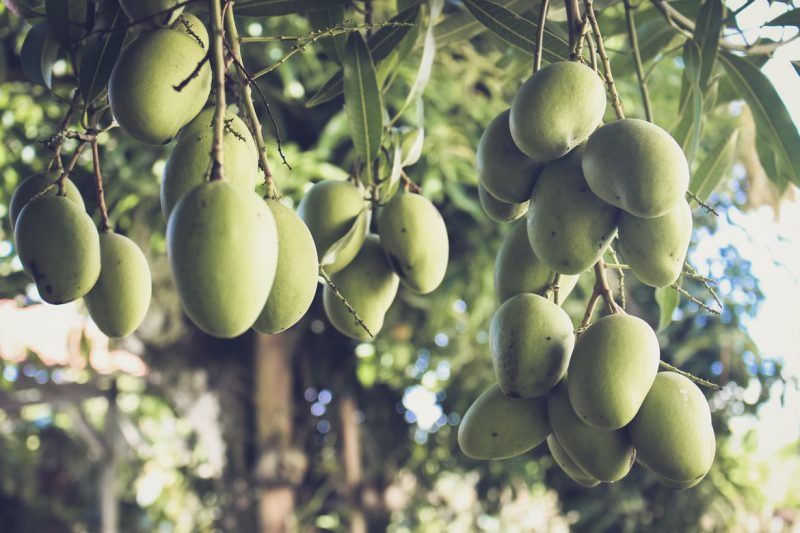
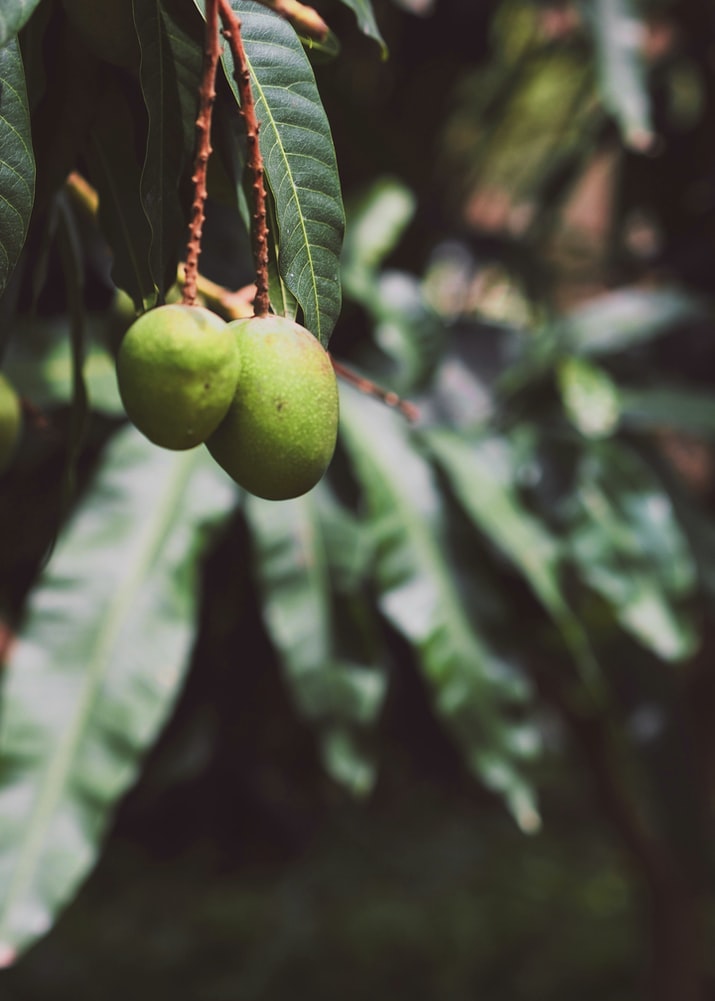
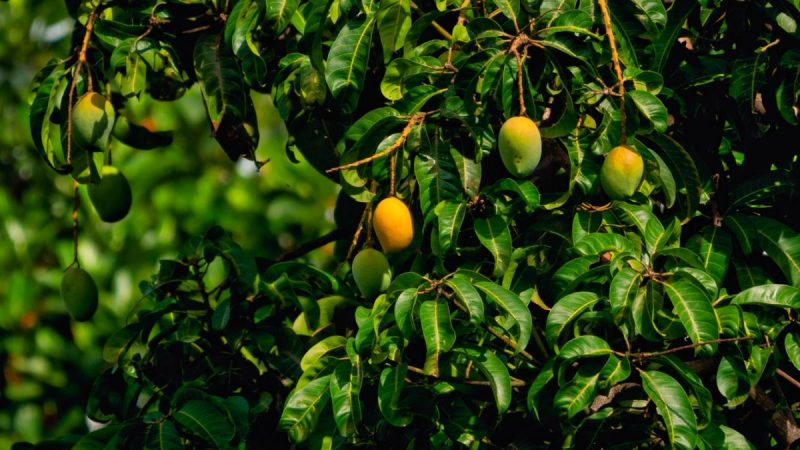
Species and varieties
There are more than 500 varieties of Mango plants. The most common are:
- Tommy Atkins: the fruit has an oval shape, the lower part is rounded and it has a small lateral “beak”. The color can be yellow-orange with reddish hues. The fruit can reach a weight of 700 g.
- Kent: the fruit has an oval shape, yellow-green color with reddish hues. The pulp is yellow-orange and very fragrant. The fruit can reach a weight of 750 g.
- Keitt: the fruit has an oval shape, the tip is rounded and it has no “beak”. The fruit can weigh up to 2 kg.
- Irwin: the fruit has an oval shape, a rounded base and no “beak”. It is not very voluminous, and the reduced size can be maintained by cutting the tops of the branches.
Environmental conditions
Light. Mango is a light-loving species. It is important to be placed in a space that is as bright as possible, but away from direct sunlight. To grow, it requires at least 6 hours of light a day.
Temperature. The optimum temperature for growth and development is 25-30º C. In winter, its exposure to slightly lower temperatures can adversely affect the plant.
Humidity. Mango prefers an atmospheric humidity of over 50%. Optimal humidity can be maintained by regular spraying of the foliage using non-calcareous water.
Substrate. The plant prefers rich soils, which allow good drainage. Peat-based substrates are recommended.
Recommended products
-
You can find products on a different store
Change Store -
You can find products on a different store
Change Store -
You can find products on a different store
Change Store -
You can find products on a different store
Change Store -
You can find products on a different store
Change Store -
You can find products on a different store
Change Store -
You can find products on a different store
Change Store -
You can find products on a different store
Change Store -
You can find products on a different store
Change Store -
You can find products on a different store
Change Store -
You can find products on a different store
Change Store -
You can find products on a different store
Change Store -
You can find products on a different store
Change Store -
You can find products on a different store
Change Store -
You can find products on a different store
Change Store -
You can find products on a different store
Change Store -
You can find products on a different store
Change Store -
You can find products on a different store
Change Store -
You can find products on a different store
Change Store -
You can find products on a different store
Change Store -
You can find products on a different store
Change Store -
You can find products on a different store
Change Store -
You can find products on a different store
Change Store -
You can find products on a different store
Change Store
Care
Watering. Watering should be done regularly, though avoiding excess. The substrate should be allowed to dry slightly before you water the plant again.
Fertilization. During the vegetative growth period, fertilizers for green plants can be administered. Fertilizers that have a balanced content of nitrogen, phosphorus, and potassium are also recommended.
Recommended products
-
You can find products on a different store
Change Store -
You can find products on a different store
Change Store -
You can find products on a different store
Change Store -
You can find products on a different store
Change Store -
You can find products on a different store
Change Store -
You can find products on a different store
Change Store -
You can find products on a different store
Change Store -
You can find products on a different store
Change Store -
You can find products on a different store
Change Store -
You can find products on a different store
Change Store -
You can find products on a different store
Change Store -
You can find products on a different store
Change Store -
You can find products on a different store
Change Store -
You can find products on a different store
Change Store -
You can find products on a different store
Change Store -
You can find products on a different store
Change Store -
You can find products on a different store
Change Store -
You can find products on a different store
Change Store -
You can find products on a different store
Change Store -
You can find products on a different store
Change Store -
You can find products on a different store
Change Store -
You can find products on a different store
Change Store -
You can find products on a different store
Change Store -
You can find products on a different store
Change Store
Repotting. Mango can be transplanted in spring, once every 2-3 years. The pots must be large enough and contain holes for drainage.
Pruning. To control the size and shape of the plant, the tops of the shoots must be pinched. This can be done once a year. It is also recommended to remove dry or improperly developed branches to allow aeration and the penetration of light.
Recommended products
-
You can find products on a different store
Change Store -
You can find products on a different store
Change Store -
You can find products on a different store
Change Store -
You can find products on a different store
Change Store -
You can find products on a different store
Change Store -
You can find products on a different store
Change Store -
You can find products on a different store
Change Store -
You can find products on a different store
Change Store -
You can find products on a different store
Change Store -
You can find products on a different store
Change Store -
You can find products on a different store
Change Store -
You can find products on a different store
Change Store -
You can find products on a different store
Change Store -
You can find products on a different store
Change Store -
You can find products on a different store
Change Store -
You can find products on a different store
Change Store -
You can find products on a different store
Change Store -
You can find products on a different store
Change Store -
You can find products on a different store
Change Store -
You can find products on a different store
Change Store -
You can find products on a different store
Change Store -
You can find products on a different store
Change Store -
You can find products on a different store
Change Store -
You can find products on a different store
Change Store
Diseases and pests
Mango is sensitive to the attack of powdery mildew, anthracnose, and bacteriosis.
Among pests, the most common are woolly apple aphids, mites, and aphids.
Propagation
Mango can be propagated through grafting or seeds. In some countries, Mango is used as an indoor decorative plant, and propagation can be achieved through seeds. The first step is to remove the pulp and the wooden tissue that shelters the seed.
Then, the seed has to be fixed with sticks or toothpicks on the edge of a glass with water. The base of the seed must remain immersed in water. The toothpicks have the role of keeping the upper part of the seed above the water. Immediately after root formation, it can be moved to a pot.
In addition
- during flowering, Mango produces both female and male flowers. For pollination, the plant can be easily shaken.
- for the interior, the most suitable varieties of Mango are the dwarf ones.
- the seeds can germinate in about two weeks.














































































































































































































































































































































































































































